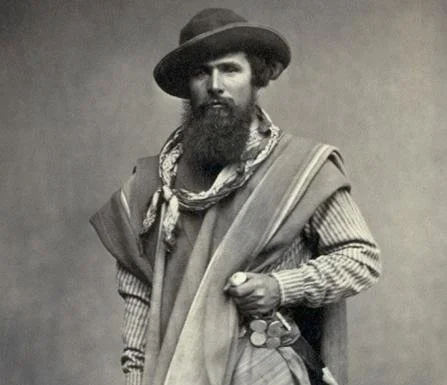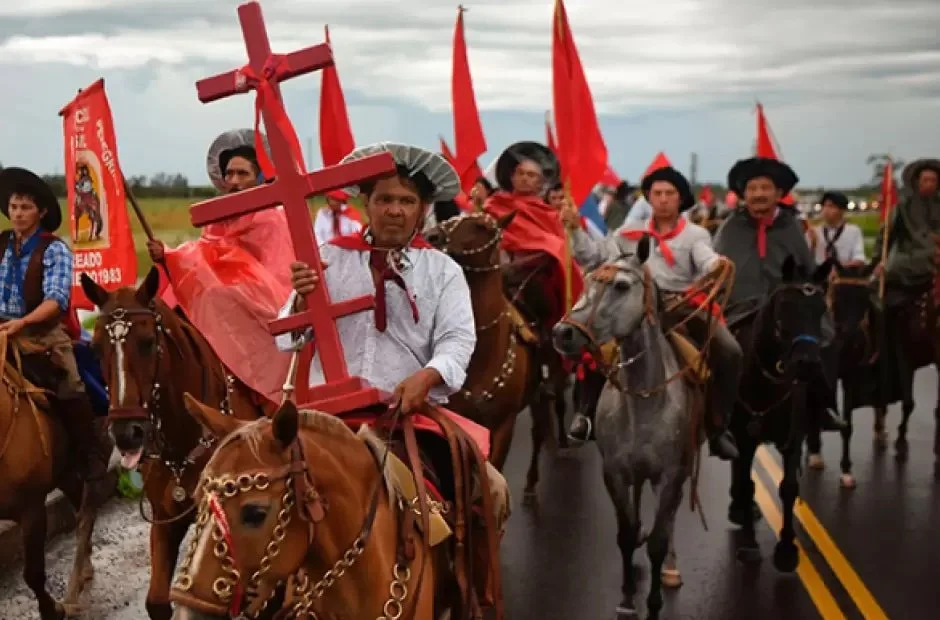Do Gauchos Go To Heaven?
Though the country is known worldwide for its cosmopolitan centers and embrace of modernity, Argentina, like any other nation, still boasts a unique cultural mythology that persists from generation to generation. While advances in technology and civilization are largely clustered around major city centers such as Buenos Aires, smaller communities in more rural provinces maintain a canon of folk heroes and quasi-religious figures, providing enrichment, direction, camaraderie, and hope. The popular consciousness of the Argentine people varies slightly depending on location, but by and large, many songs, tales, and common figures are recognized by the majority.
An Argentine gaucho, 1868.
The gaucho is a fixture of Argentine folklore, romanticized by South American writers towards the end of the 19th century and into modernity. Resembling the American cowboy, gauchos were nomadic horsemen of great skill and greater bravery, reputed to be adept cattle-drivers and highly resistant to authority. Due to Argentina’s status as a developing country at the time, gauchos’ ways and exploits were quickly mythologized, with hard facts often becoming lost beneath legend. One such gaucho, today venerated largely in the provinces of Corrientes, Chaco, and northern Santa Fe, was the outlaw commonly known as Gauchito Gil.
A small statue of Gauchito Gil.
Though the tale varies in telling, Antonio Gil was born in the 1840s, somewhere in rural Argentina. When Gil was a young man, the Triple Alliance War broke out between Paraguay and the eponymous alliance of Argentina, Uruguay, and imperial Brazil. Gil either joined or was conscripted to fight in the conflict, but later deserted, preferring peace over the bloodshed of his kin. Later, during the ongoing Argentine Civil Wars, Gil renounced fealty to the Argentine government and became an outlaw, embodying a Robin Hood-like persona and redistributing the wealth of his conquests to the people.
A pilgrimage to the Sanctuary of Gauchito Gil.
Today, Gauchito Gil is considered a folk saint. Roadside shrines can be found in his honor, denoted by red flags bearing embroidered messages of thanks. Gil’s mortal remains can purportedly be found at the Sanctuary of Gauchito Gil, a few kilometers outside Mercedes in Corrientes. Great pilgrimages to the sanctuary, 200,000 strong, are organized regularly to ask the outlaw saint for favors. Gauchito Gil’s death- and feast day, January 8th, is marked by celebration, dance, drinking, and effigy, where Gil’s likeness stands beside other figures of folk Catholicism such as San La Muerte.
Devotees and ecclesiastic figures alike have campaigned for Gauchito Gil’s canonization, despite detractors claiming his exclusion due to his criminal activities. Whatever may come of Gauchito Gil’s name as a saint (let alone his immortal soul), he is but one of many bright patches in the fabric of Argentina’s cultural heritage.



